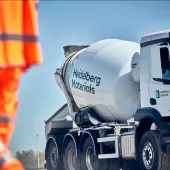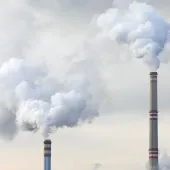Laing O'Rourke sets carbon limits for procured concrete
The move will guarantee a cap on carbon emissions from concrete it uses to deliver public infrastructure projects and private works. Laing O’Rourke said it is expecting this new sustainability measure will contribute to reducing demand for high-emissions concrete.
Once purchased, carbon emissions incurred during the manufacture of materials are also counted towards the buyer's footprint as Scope 3 emissions. In the case of Laing O’Rourke, Scope 3 emissions represent approximately 95% of its overall emissions.
Hollie Hynes, Laing O'Rourke's general manager - sustainability and environment, said, "We are setting a limit to the embodied emissions that we will accept in our concrete mixes because this material will have one of the greatest impacts on our journey to net zero. If we get concrete right, we will go a long way towards achieving our sustainability goals.
"We are uniquely placed in our ability to interact with stakeholders across the entire value chain, including delivery partners, design partners, manufacturing partners, government clients, and more. By adopting a systematic approach to curbing our emissions from materials we buy, we intend to positively influence the entire construction ecosystem.”
Evolving practice and implementation
Current industry practice for procuring concrete involves construction companies specifying only technical requirements to their concrete suppliers, such as strength, durability, workability, and setting time. Carbon emissions have been largely absent from these considerations.
Laing O’Rourke’s carbon limits for concrete products will be adopted as a minimum requirement on all new Laing O’Rourke projects where the company has operational ownership. Live projects are encouraged to benchmark against this minimum requirement.
“Our limits to emissions from concrete are realistic and achievable within the market’s current capabilities. In fact, some of our projects are already performing far better than these limits require,” said Hollie.
“We intend to use this embodied carbon measure as a valid performance metric for concrete, and our projects. Once we’ve established this, we can increase our internal minimum requirement as allowed by our clients’ specifications and market availability,” she added.
A definition of ‘low carbon concrete’
As a leader for innovation and excellence in the construction sector, Laing O’Rourke has also created a definition for concrete products to be considered as ‘low carbon’ based on a specified embodied carbon limit for different concrete’s strength grade.
This definition provides a benchmark for the company’s projects to set targets against, as allowed by the supply chain capabilities near sites as well as other governing factors.
Both Laing O’Rourke’s new maximum tolerance for emissions in concrete and its definition of low carbon concrete are expressed in kilograms of carbon dioxide per cubic metre of concrete and vary by strength grade.

Monica Hanus-Smith, Laing O’Rourke’s low carbon materials lead, said, “Our proposed definition for ‘low carbon concrete’ is stricter than our maximum tolerance for emissions and was developed by accounting for what is available in the market. The use of low carbon concrete on projects is feasible and results in a significant reduction in emissions.”
“Until now, there has been no widely accepted definition of ‘low carbon’ concrete in Australia, and without one, naming a concrete mix as such has been subjective and open to interpretation. We’re drawing a line in the sand for our business to be consistent and transparent and for our stakeholders to understand what we mean when we talk about ‘low-carbon concrete.”







